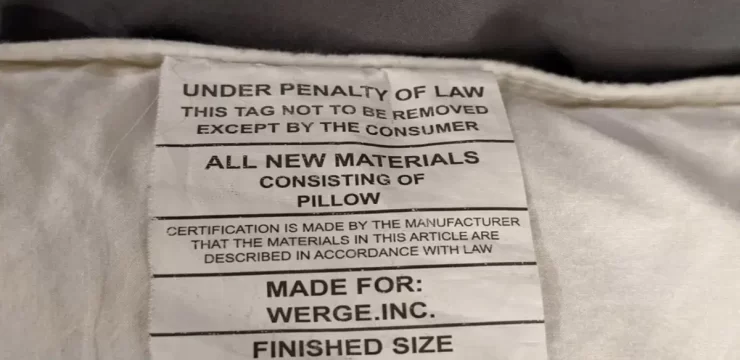Eggs are a fundamental component in many American kitchens, cherished for their versatility in dishes ranging from breakfast staples to intricate baked goods. However, ensuring their freshness is crucial to both the quality of your culinary creations and your health. Consuming spoiled eggs can lead to foodborne illnesses, making it essential to recognize the signs of an egg gone bad. Here are several reliable methods to determine an egg’s freshness:

1. The Float Test
A widely trusted technique for assessing an egg’s freshness is the float test:
-
Procedure: Fill a bowl with cold water and gently place the egg into it.
-
Interpretation:
-
Sinks and lays flat: The egg is fresh.
-
Sinks but stands upright: The egg is still safe to consume but should be used soon.
-
Floats to the surface: The egg is no longer fresh and should be discarded.
-
This method works because, over time, eggshells, which are porous, allow air to seep in, increasing the size of the internal air cell. As this air pocket enlarges, the egg becomes more buoyant, causing it to float.
2. The Sniff Test
Your sense of smell is a powerful tool in detecting spoiled eggs:
-
Procedure: Crack the egg onto a clean plate or bowl and sniff it.
-
Interpretation:
-
Neutral or no distinct odor: The egg is fresh.
-
Foul or sulfur-like smell: The egg has gone bad and should be discarded.
-
A spoiled egg emits a distinctive, unpleasant odor that is hard to miss.
3. The Shake Test
Another simple method involves gently shaking the egg:
-
Procedure: Hold the egg close to your ear and shake it gently.
-
Interpretation:
-
No sound or very little movement: The egg is fresh.
-
Sloshing sound: The egg is likely spoiled.
-
As eggs age, the yolk and white thin out, causing them to move more freely inside the shell, which can produce a sloshing sound when shaken.
4. Checking Dates
Egg cartons often display a “sell-by” or expiration date:
-
Sell-by date: Indicates how long the store should display the eggs for sale. Eggs can typically be consumed safely for several weeks beyond this date if refrigerated properly.
-
Expiration date: Suggests the date after which the eggs may not be at their best quality. However, eggs can often remain safe to eat for a period after this date.
It’s important to note that these dates are indicators of quality rather than safety. Proper refrigeration can extend an egg’s usability beyond these dates.
5. Visual Inspection of the Shell
Examining the eggshell can provide clues about the egg’s condition:
-
Cracks or sliminess: May indicate bacterial contamination; such eggs should be discarded.
-
Powdery appearance: Could suggest mold growth; these eggs are unsafe to consume.
A clean, intact shell is a good sign, but it’s not a definitive indicator of the egg’s internal quality.
6. Inspecting the Egg’s Contents
Once cracked open, the appearance of the yolk and white can reveal freshness:
-
Fresh eggs:
-
Yolk: Firm and holds its shape.
-
White: Thick and stays close to the yolk.
-
-
Older eggs:
-
Yolk: Flattened or breaks easily.
-
White: Thin and spreads widely.
-
Any presence of unusual colors, such as pink, green, or iridescent hues, indicates bacterial growth, and the egg should be discarded.
7. Storage Practices
Proper storage significantly impacts an egg’s shelf life:
-
Refrigeration: Keep eggs refrigerated at or below 40°F (4°C) to maintain freshness and reduce the risk of bacterial growth.
-
Placement: Store eggs in their original carton on a shelf inside the refrigerator rather than the door, where temperatures fluctuate more frequently.
-
Duration: When refrigerated properly, eggs can remain fresh for several weeks, often beyond the dates indicated on the carton.
8. Handling Hard-Boiled Eggs
Hard-boiled eggs have a shorter shelf life than raw ones:
-
In the shell: Can be refrigerated for up to one week.
-
Peeled: Should be consumed within one to two days.
Signs of spoilage in hard-boiled eggs include a strong, sulfur-like odor, slimy egg white, or chalky yolk.
9. Understanding Eggshell Color
The color of an eggshell, whether white or brown, does not affect its freshness or nutritional value. Shell color is determined by the breed of the hen and is not an indicator of quality or taste.
10. Recognizing Safe Consumption Timelines
Even if eggs are past their carton dates, they may still be safe to eat:
-
Proper storage: Eggs refrigerated promptly and kept at a consistent temperature can remain safe for consumption for three to five weeks beyond the pack date.
-
Visual and olfactory checks: Always perform the sniff and visual tests before use, regardless of the date.
Incorporating these methods into your routine can help ensure that the eggs you consume are fresh and safe, enhancing the quality of your dishes and safeguarding your health.





